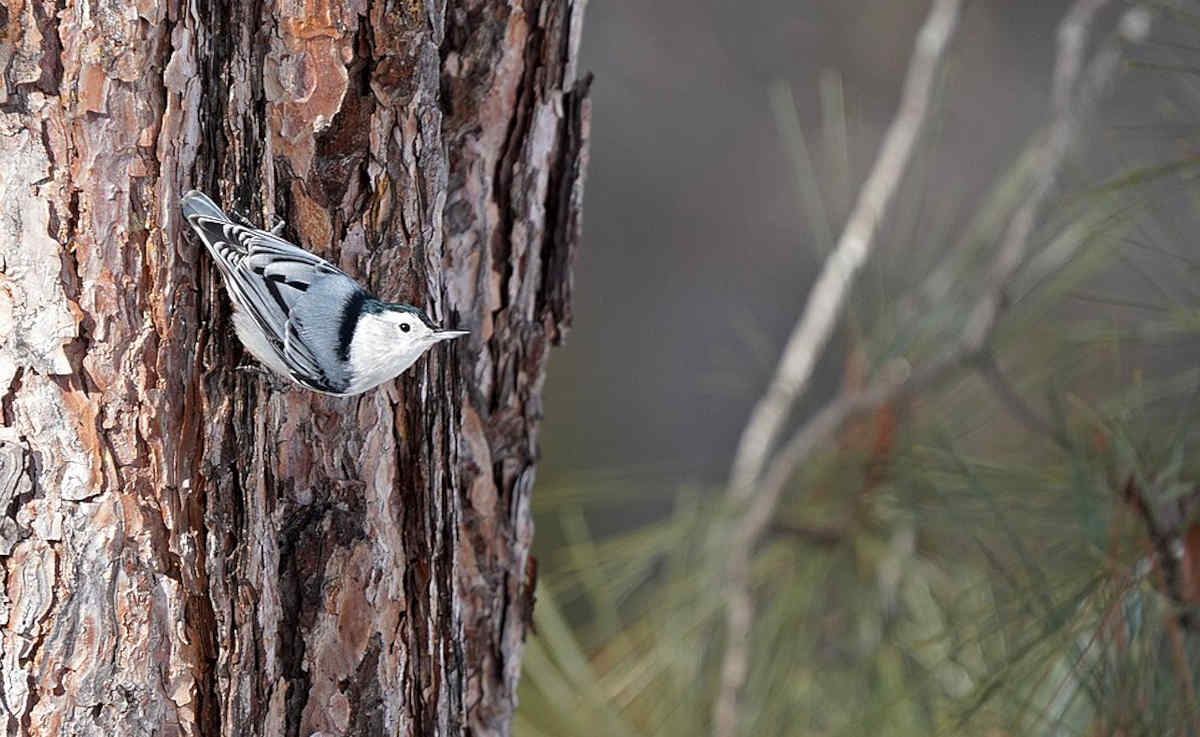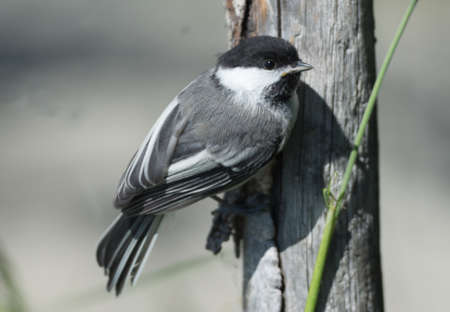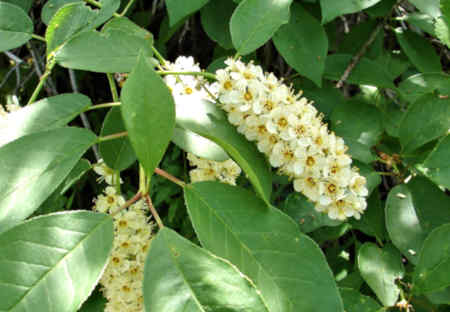Nuthatch Guide
White-Breasted Nuthatch: The Agile Tree-Climber
Fast Facts
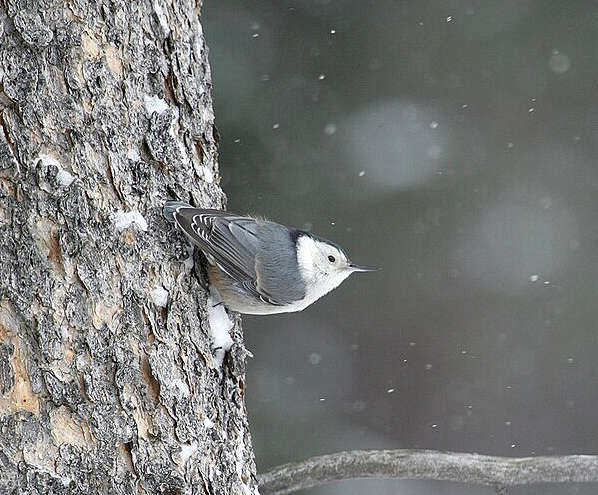
A Nuthatch walking down a tree
Scientific Name: Poecile sp.
Scientific Name: Sitta carolinensis
Family: Sittidae (same family as other nuthatches)
Size: 5.1-5.5 inches (13-14 cm) in length
Wingspan: 7.9-10.6 inches (20-27 cm)
Weight: 0.6-1.1 ounces (17-30 grams)
Lifespan: Typically 2-3 years in the wild, but some live up to 9 years
Range: Found across the eastern United States, parts of the Midwest, and southern Canada
Habitat: Deciduous forests, wooded suburbs, and parks
Diet: Insects in summer, seeds and nuts in winter
Nesting: Cavity nesters; 5-9 eggs per clutch
Bird Box Entrance Size: 1 1/4" entrance hole
Caching Behavior: Stores seeds and insects in bark crevices for winter survival
Foraging Behavior: Often seen walking up and down tree trunks or upsidedown on branches in search of insects
Parental Care: Both parents participate in feeding the young, primarily with insects
Conservation status:Least Concern by IAUC
How to Support Nuthatches:Plant native nut producing trees
White-Breasted Nuthatch: The Agile Tree-Climber
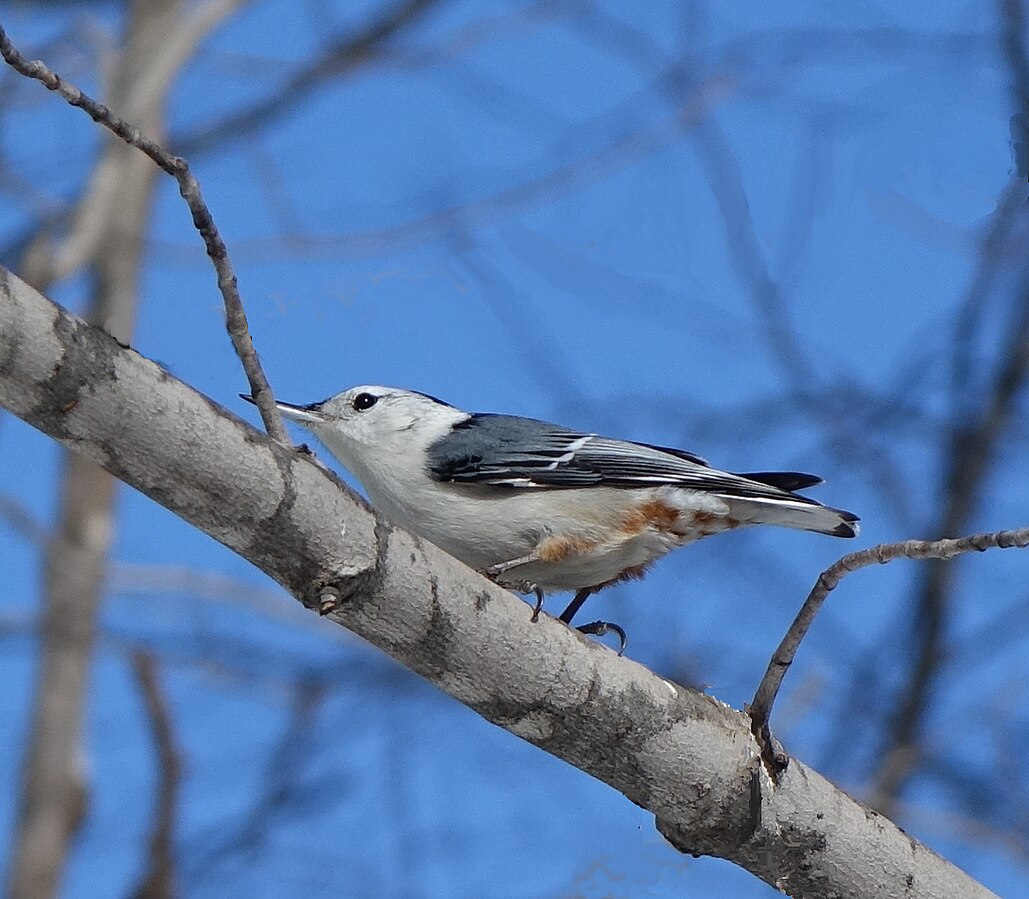
Nuthatches have very short tails
Introduction
The White-Breasted Nuthatch is an energetic and acrobatic songbird known for its distinctive "yank-yank" call and unique ability to move headfirst down tree trunks.
They are very entertaining to watch. These small, compact birds with very short tails, are common in forests, parks, and backyard feeders throughout the eastern United States. Their striking black, white, and gray plumage, along with their fearless foraging behavior, make them a favorite among birdwatchers.
Unlike many other songbirds, White-Breasted Nuthatches do not typically form large flocks. Instead, they often travel with mixed-species foraging groups in winter, joining chickadees, titmice, and woodpeckers. This social behavior helps them locate food sources and avoid predators.
Species and Range
The White-Breasted Nuthatch is one of four nuthatch species found in North America:
White-Breasted Nuthatch (Sitta carolinensis) - Found across much of the U.S. in deciduous forests.
Red-Breasted Nuthatch (Sitta canadensis) - Prefers coniferous forests in the northern U.S. and Canada; smaller with a bold black eye stripe.
Brown-Headed Nuthatch (Sitta pusilla) - Native to the southeastern U.S.; recognized by its small size and high-pitched calls.
Pygmy Nuthatch (Sitta pygmaea) - Found in the western U.S.; often forages in small, cooperative groups.
Each species shares similar behaviors, such as foraging along tree trunks and caching food, but they inhabit distinct environments.
Diet and Foraging Behavior
White-Breasted Nuthatches have a highly varied diet. In warm months, they feed on beetles, caterpillars, ants, and spiders. In colder months, they switch to seeds, acorns, and nuts, often caching them in tree bark crevices for later use.
Their most distinctive foraging habit is their ability to climb headfirst down tree trunks. Unlike woodpeckers, which primarily climb upward, nuthatches move in all directions along tree bark, giving them an advantage in finding hidden insects and larvae.
Nesting and Breeding Behavior
White-Breasted Nuthatches are cavity nesters, often using natural tree cavities or abandoned woodpecker holes. They may also accept nest boxes designed for chickadees or titmice.
&bull The female lines the nest with bark, feathers, fur, and plant fibers to create a soft space for her eggs.
&bull She lays 5 to 9 white eggs with reddish-brown speckles and incubates them for about 12-14 days.
&bull Both parents work together to feed the chicks, primarily providing insects and other protein-rich food.
A unique behavior of White-Breasted Nuthatches is "bill-sweeping," where they use a piece of bark to smear insects or resin around the nest entrance. This may help deter predators or parasites.
White-Breasted Nuthatch Nestbox Specifications
Since Nuthatches are cavity nesters, they will occasionally use nest boxes with the following specifications:
Material: Untreated wood (cedar or pine)
Floor Space: 4 x 4 inches
Interior Height: 8 to 10 inches
Entrance Hole: 1 1/4 inches in diameter, positioned 6 to 8 inches above the floor. Be sure to keep the hole 1 1/4" in size, any larger, invasive birds, like starlings will be able to nest.
Mount the nestbox 6 to 15 feet above the ground on a tree or baffled pole in woodlands.
To protect against predators like raccoons and squirrels, install a predator guard - a metal or wood ring that extends the hole outward, making it harder for predators to reach inside.
Do not add a perch. Perches are unnecessary and give predators easy access.
A removable side allows for easy cleaning in the winter.
These sized nestboxes also work for the Tufted Titmouse.
Conservation and How to Attract nuthatchs to Your Property
White-Breasted Nuthatches are not considered endangered, but loss of woodlands, their habitat, has negatively impacted their populations. You can help support these birds by creating a nuthatch-friendly environment:
1. Plant Native Trees
Oaks, hickories, and maples provide essential food sources like acorns and caterpillars. Native trees support more insects, which are important for feeding nestlings.
2. Provide Nesting Sites
Leaving dead trees or snags in your yard can provide natural nesting sites. If that's not an option, installing a properly sized bird box can encourage nesting.
3. Offer Food and Water
Bird Feeders: White-Breasted Nuthatches love sunflower seeds, peanuts, and suet. Offering these in winter can help them survive when natural food sources are scarce.
I recommend black-striped and/or black oil sunflower seeds, as their tough shells prevent non-native sparrows and starlings from cracking them open, reducing competition with native songbirds.
Water Source: Birds love water sources. An addition of a water source, even a small bird bath will increase your bird numbers.
By planting native vegetation, preserving natural tree cover, and offering supplemental food in winter, you can help sustain healthy nuthatch populations while enjoying the sight and sound of these lively little birds year-round.

Nuthatchs are lively little birds that are fun to watch.
